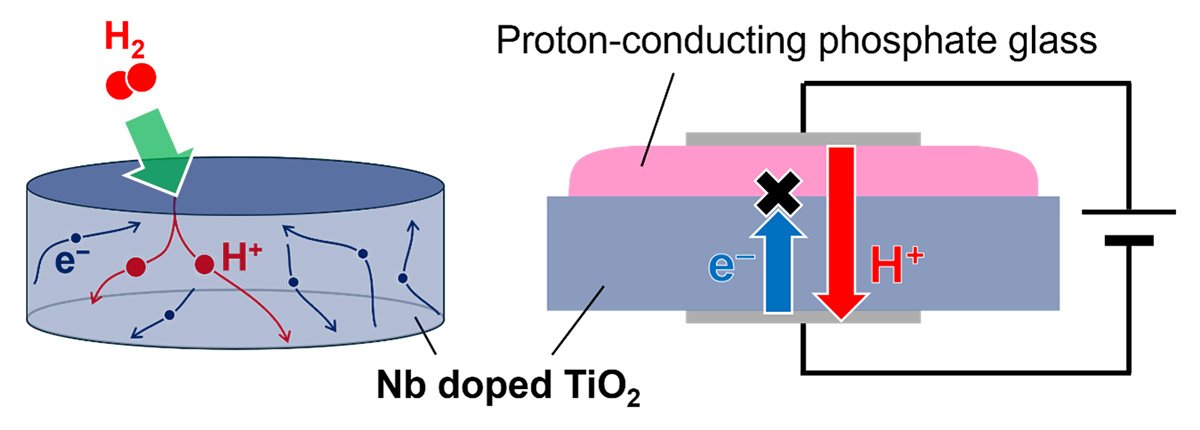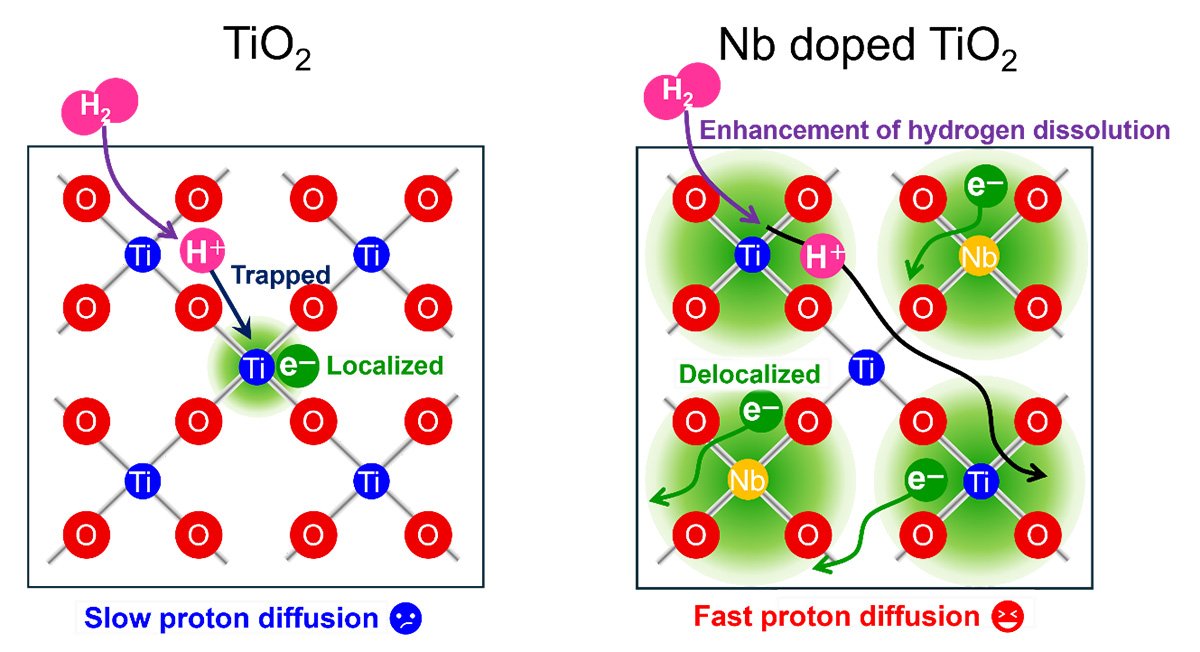The performance of a fuel cell -- a device that converts chemical energy into electrical energy -- depends on how well the ions can move through the cell's material. Most current fuel cells operate at high temperatures above 500 °C. To reduce costs and enable the use of various fuels, researchers aim to develop fuel cells that work efficiently in the intermediate temperature range of 200-500 °C. However, progress has been limited by a lack of materials that can conduct ions effectively at these temperatures. A team from Tohoku University has now discovered a new material that can conduct both protons and electrons efficiently at the "moderate" temperature range.
They published their findings on August 18, 2025 in the Journal of the American Chemical Society.
"Such materials are essential for developing next-generation hydrogen energy devices, like fuel cells and hydrogen separation membranes," said Tomoyuki Yamasaki, assistant professor at Tohoku University's Institute of Multidisciplinary Research for Advanced Materials. "These devices help convert hydrogen into electricity or produce hydrogen more efficiently, which supports the shift toward a sustainable, low-carbon society."
The researchers found that titanium dioxide (TiO2) doped with niobium (Nb) functions as a mixed conductor with high proton and electron conductivity at moderate temperatures. Nb acts as an electron donor, increasing electron density in the crystal. While this enhances electronic conductivity, the role of Nb goes beyond that. Nb stabilizes protons within the TiO2 crystal, allowing the material to absorb 10 to 100 times more hydrogen than undoped TiO2. Furthermore, Nb weakens the binding between positively charged protons and negatively charged Ti, enabling protons to diffuse fast. Together, these effects lead to fast and simultaneous conduction of both protons and electrons.
"This work proposes a new concept: doping with electron donors increases electron density, which in turn enhances proton conductivity." said Takahisa Omata, professor at Tohoku University's Institute of Multidisciplinary Research for Advanced Materials.

To measure the proton conductivity, the team used a proton-conducting glass electrolyte they developed. This glass conducts protons but blocks electrons, allowing accurate measurement of proton conduction even in an electronic conductor.
"This technique allowed us to clearly isolate and evaluate proton conduction in a highly electronic conductor," Yamasaki said. "The proton conductivity we measured is higher than that of many known proton-conduction electrolytes at the same temperature."
This is the first reported demonstration of electron-donor doping facilitating both proton and electron conduction at intermediate temperatures. This work could greatly expand the range of materials available for future energy technologies, including fuel cells and hydrogen separation membranes.

- Publication Details:
Title: Enhanced Proton Transport in Nb-Doped Rutile TiO2: A Highly Useful Class of Proton-Conducting Mixed Ionic Electronic Conductors
Authors: Takuma Shiraiwa, Tomoyuki Yamasaki, Kizuku Kushimoto, Junya Kano, and Takahisa Omata
Journal: Journal of the American Chemical Society






